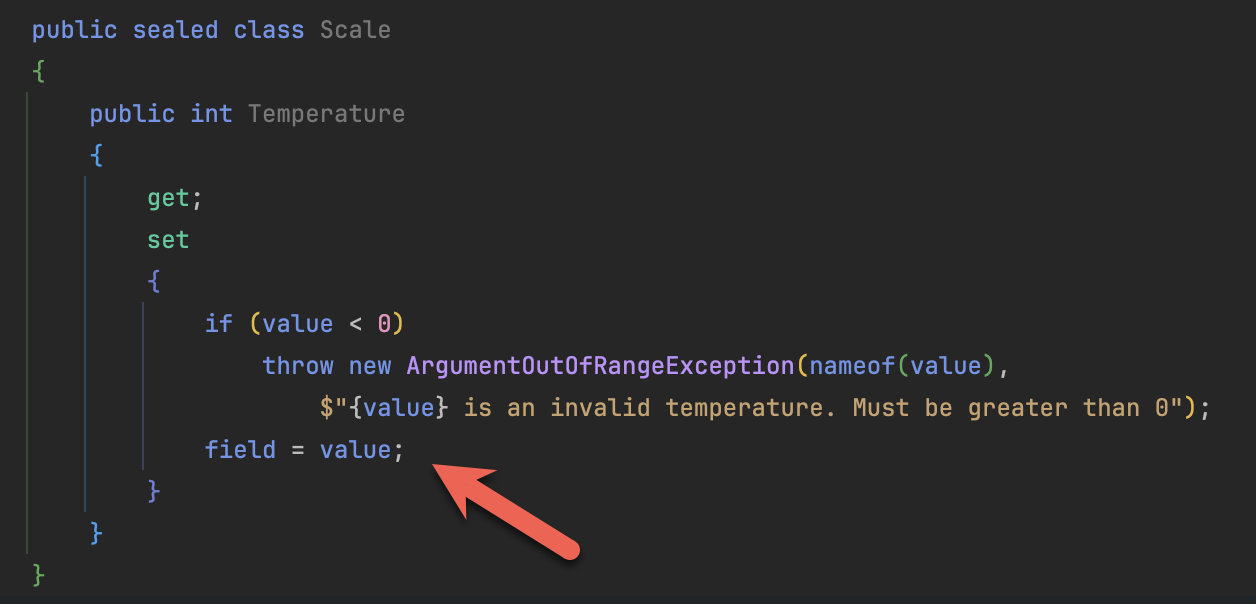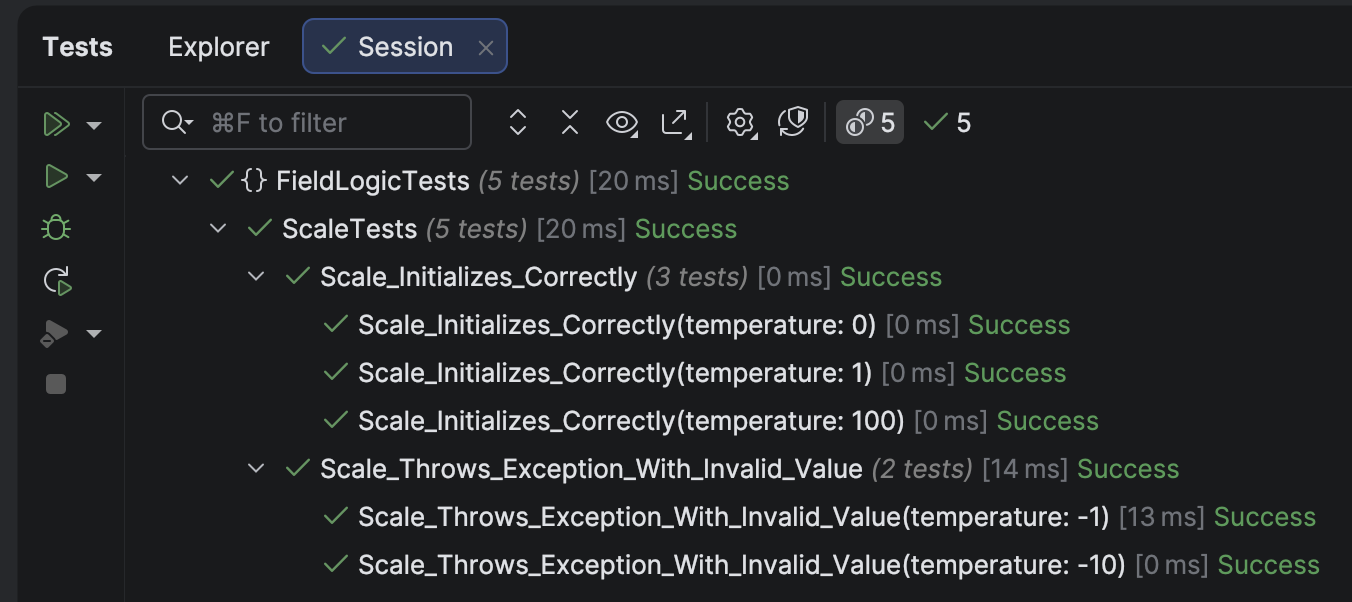Using The Field Keyword In C# & .NET
[C#, .NET]
One of the most powerful features of .NET is properties.
A property is a construct that allows you to control the exposure of the inner state of objects, including setting whether or not the state can be changed.
Suppose we have a weighing scale that is modeled by the Scale type.
It would look something like this:
public sealed class Scale
{
public required int Temperature { get; init; }
}
Temperature here exposes the state, which is, in this case, the temperature.
Init here means that you must provide a value when instantiating this object, and it cannot be changed later.
If you want to be able to mutate it, change the code as follows:
public sealed class Scale
{
public required int Temperature { get; set; }
}
So far, so good.
Now, suppose we wanted to validate the temperature and specify that the lowest valid temperature is 0 degrees.
Typically, we would need to introduce a backing field for this purpose.
public sealed class Scale
{
private int _temperature;
public int Temperature
{
get => _temperature;
set
{
if (value < 0)
throw new ArgumentOutOfRangeException(nameof(value),
$"{value} is an invalid temperature. Must be greater than 0");
_temperature = value;
}
}
}
Here, _temperature is our backing field.
We only set it if our validation passes, and we have access to what was passed via the value keyword.
If the validation fails, we throw a ArgumentOutOfRangeException exception.
The problem here is that a lot of boilerplate has been introduced to solve what is fundamentally a very simple problem.
An improvement has been made to this, starting from C# 13 - the field keyword.
Using this, we can rewrite the code as follows:
public sealed class Scale
{
public int Temperature
{
get;
set
{
if (value < 0)
throw new ArgumentOutOfRangeException(nameof(value),
$"{value} is an invalid temperature. Must be greater than 0");
field = value;
}
}
}
The magic is happening here:

field is used to allow the setting of the value of the property directly, without requiring a backing field for intermediate work.
We can verify that it works with some tests:
[Theory]
[InlineData(1)]
[InlineData(0)]
[InlineData(100)]
public void Scale_Initializes_Correctly(int temperature)
{
var scale = new Scale()
{
Temperature = temperature
};
scale.Temperature.Should().Be(temperature);
}
[Theory]
[InlineData(-1)]
[InlineData(-10)]
public void Scale_Throws_Exception_With_Invalid_Value(int temperature)
{
var ex = Record.Exception(() =>
{
var scale = new Scale()
{
Temperature = temperature
};
});
ex.Should().BeOfType<ArgumentOutOfRangeException>();
}
Our tests should pass.

Thus, our code is much terser and easier to maintain.
TLDR
The field keyword allows flexible usage and validation of automatic properties.
The code is in my GitHub.
Happy hacking!